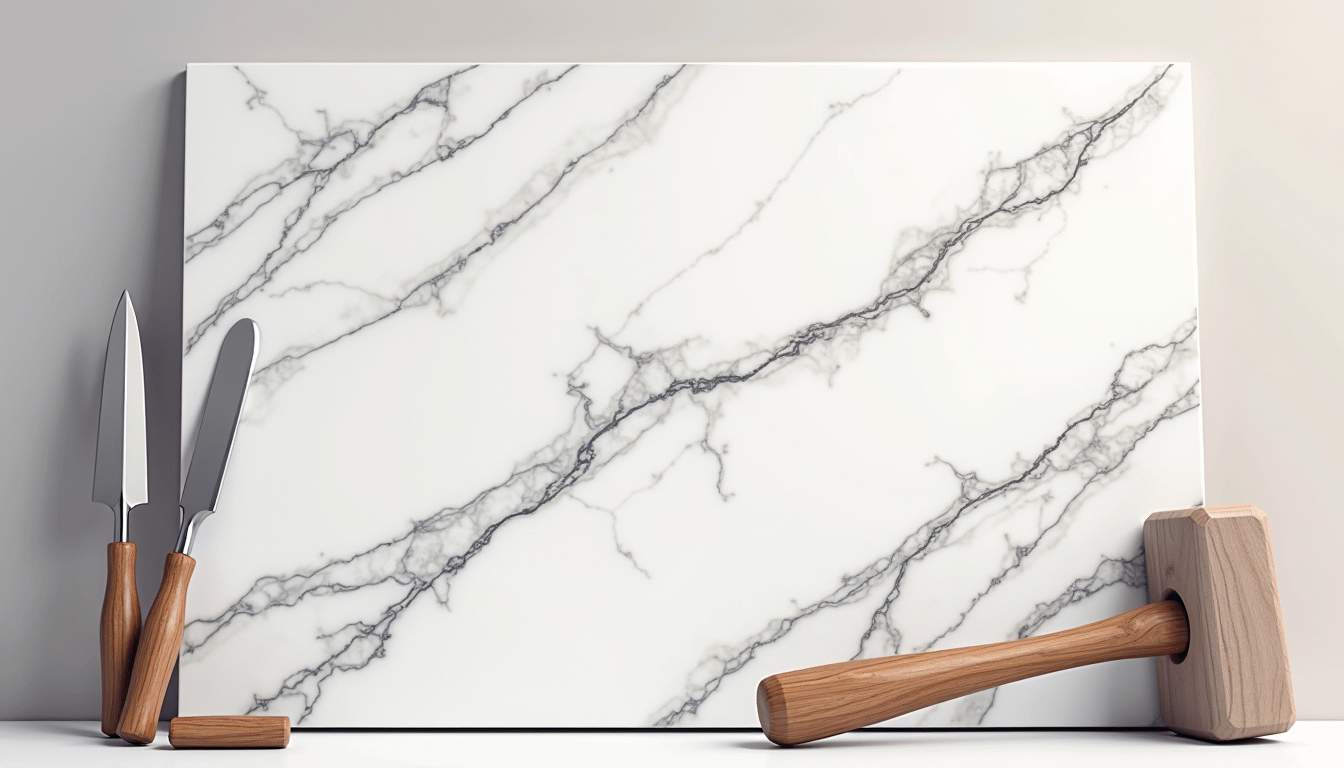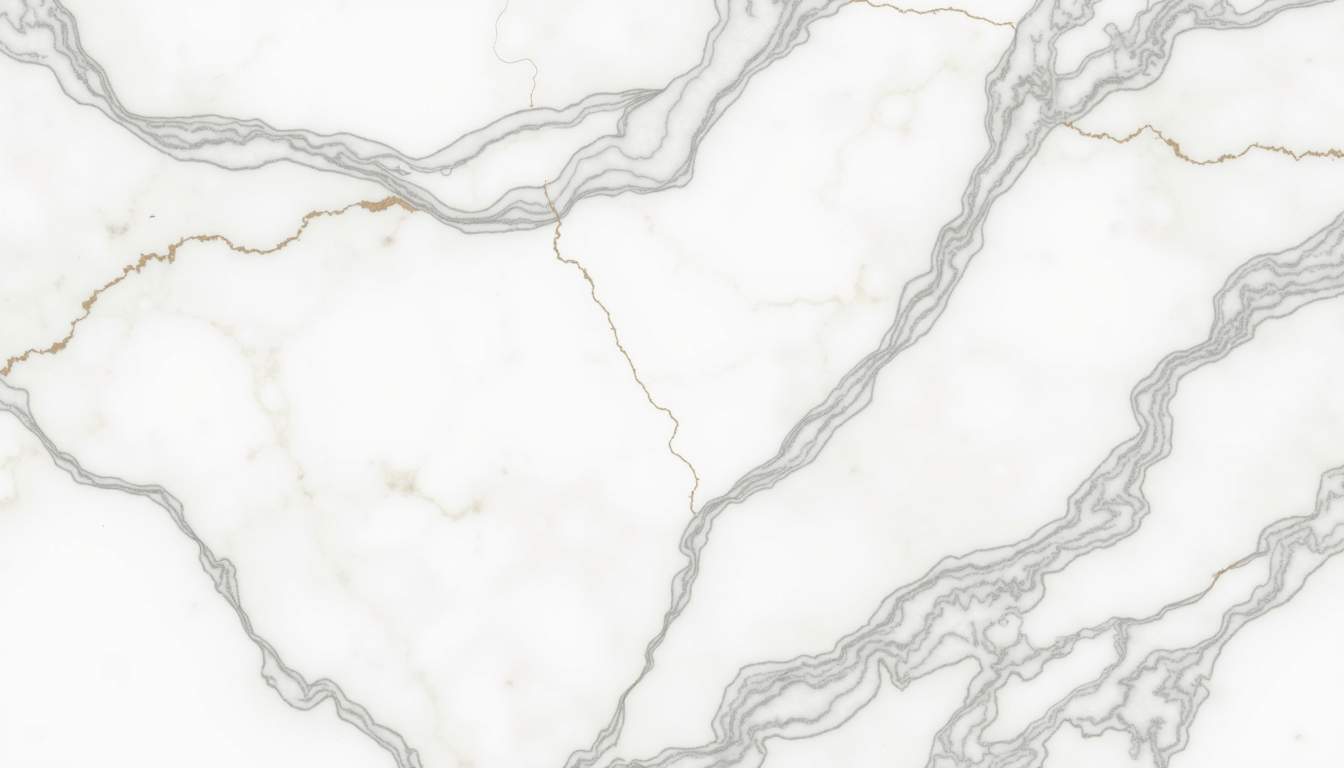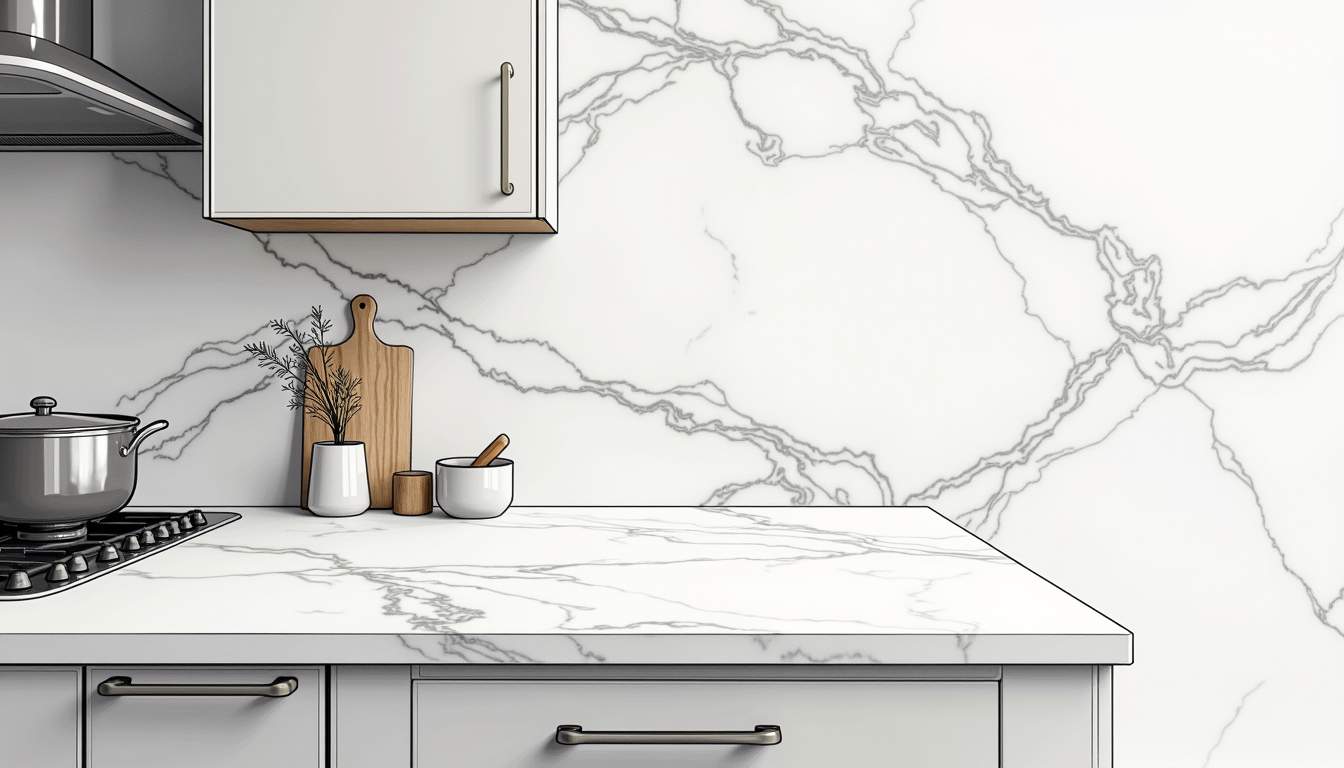
Explore the timeless elegance of Carrara marble in this comprehensive guide.
Carrara Marble
Carrara marble is a beautiful and timeless natural stone that has been used for centuries in art, architecture, and design. Renowned for its striking appearance and durability, it has become a popular choice for various applications, particularly in home interiors. This article will explore the characteristics of Carrara marble, its uses, and why it remains a favored material among designers and homeowners alike.
What actually is a Carrara Marble?
Carrara marble is a high-quality white or blue-grey metamorphic rock that is primarily composed of calcite. It is named after the city of Carrara in Tuscany, Italy, where it has been quarried since the Roman times. The unique coloration and veining patterns of Carrara marble are a result of the geological processes that formed it, making each slab distinct and aesthetically pleasing.
One of the most notable features of Carrara marble is its elegant appearance, which can range from a pure white with subtle grey veining to a more pronounced grey background with darker streaks. This versatility allows it to complement a variety of design styles, from classic to contemporary. Its natural beauty has made it a favored choice for sculptures, flooring, countertops, and other architectural elements.
In addition to its visual appeal, Carrara marble is highly regarded for its durability. While it is softer than some other stones, such as granite, it can withstand daily wear and tear when properly maintained. Regular sealing and careful cleaning can help preserve its beauty for years to come, making it a practical choice for various applications.
The history of Carrara marble is as rich as its appearance. The quarries of Carrara have been a source of inspiration for artists and architects alike, including the likes of Michelangelo, who famously used the marble to create his iconic sculptures. The marble’s fine grain and ability to hold intricate details make it an ideal medium for artistic expression. Today, many modern artists continue to seek out Carrara marble for its timeless quality and the way it captures light, adding depth and dimension to their work.
Moreover, the extraction and processing of Carrara marble have evolved significantly over the centuries. While ancient techniques relied heavily on manual labor, modern quarrying employs advanced machinery that enhances efficiency while minimizing waste. This shift not only allows for larger and more uniform slabs but also helps to preserve the integrity of the surrounding environment. As sustainability becomes increasingly important in the stone industry, many Carrara marble producers are adopting eco-friendly practices to ensure that this exquisite material can be enjoyed for generations to come.
Carrara Marble Worktops
Carrara marble worktops are a popular choice for kitchens and bathrooms due to their stunning aesthetic and functional qualities. When used as a countertop material, Carrara marble adds a touch of luxury and sophistication to any space. The smooth surface and cool temperature make it an ideal work surface for cooking and baking, while its unique veining patterns create a visually striking focal point in the room.
One of the advantages of Carrara marble worktops is their ability to blend seamlessly with different design elements. Whether paired with modern cabinetry or traditional wooden finishes, Carrara marble can enhance the overall look of the space. Its neutral color palette allows it to complement a variety of color schemes, making it a versatile option for homeowners and designers alike. The subtle gray and white tones of Carrara marble can evoke a sense of calm and elegance, making it a favored choice in minimalist and contemporary designs. Furthermore, the natural variations in the stone mean that each worktop is unique, ensuring that your kitchen or bathroom has a distinctive character.
However, it is essential to consider the maintenance requirements of Carrara marble worktops. Being a natural stone, it is porous and can stain if not properly sealed. Regular sealing is recommended to protect the surface from spills and stains, particularly from acidic substances like lemon juice or vinegar. Additionally, using cutting boards and trivets can help prevent scratches and heat damage, ensuring that the worktop remains in pristine condition. Beyond sealing, routine cleaning with a pH-balanced stone cleaner can help maintain the marble’s luster and prevent dullness over time. Homeowners should also be mindful of the cleaning tools they use, as abrasive materials can scratch the surface and diminish its beauty.
In addition to their aesthetic appeal, Carrara marble worktops also carry a sense of history and tradition. Sourced from the quarries of Carrara, Italy, this marble has been used in art and architecture for centuries, gracing the works of renowned artists such as Michelangelo and Bernini. This rich heritage adds an element of storytelling to your home, as each slab of marble embodies a piece of Italian craftsmanship and artistry. When choosing Carrara marble for your worktops, you are not just selecting a surface; you are embracing a legacy that has stood the test of time. This connection to history can enhance the overall ambiance of your space, making it feel more inviting and cultured.
Carrara Marble Worktop Care Tips
Daily Care:
- Wipe spills immediately: Carrara marble is porous and susceptible to staining. Use a soft cloth or sponge to blot spills, don’t rub.
- Use a mild cleaner: Warm water and a mild, pH-neutral dish soap are generally safe for daily cleaning. Avoid abrasive cleaners, bleach, or acidic substances like vinegar, lemon juice, or harsh chemical cleaners.
- Dry thoroughly: After cleaning, dry the surface with a clean, soft cloth to prevent water spots.
Preventing Stains and Etching:
- Use coasters and placemats: Protect the surface from hot dishes, drinks, and potentially staining substances.
- Cutting boards are essential: Never cut directly on the marble surface.
- Seal the marble: Regularly sealing the marble is crucial. A good quality sealant will help to repel liquids and prevent stains. Follow the sealant manufacturer’s instructions for application and frequency.
- Avoid acidic substances: As mentioned, acidic substances can etch or dull the marble’s surface. Be especially careful with citrus fruits, tomatoes, and vinegar.
Dealing with Stains:
Poultices: For stubborn stains, a poultice can be used. This involves creating a paste of a porous material (like baking soda or diatomaceous earth) mixed with a cleaning agent. The paste is applied to the stain, covered with plastic wrap, and left to draw out the stain.